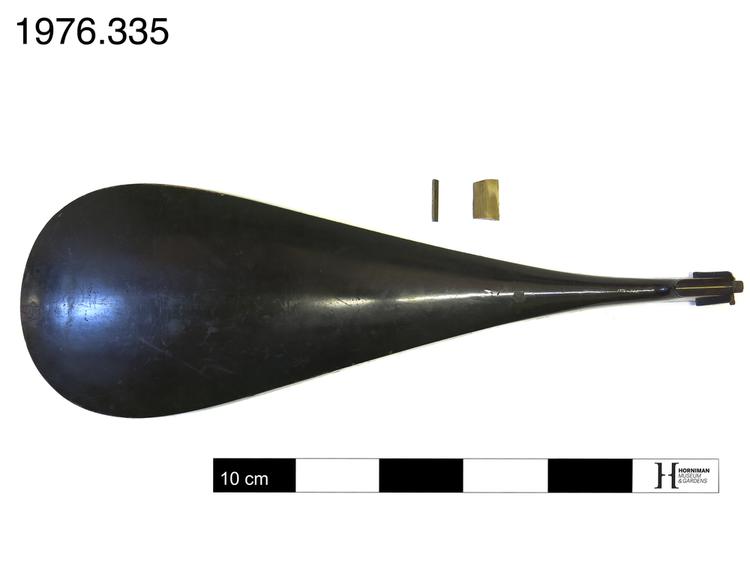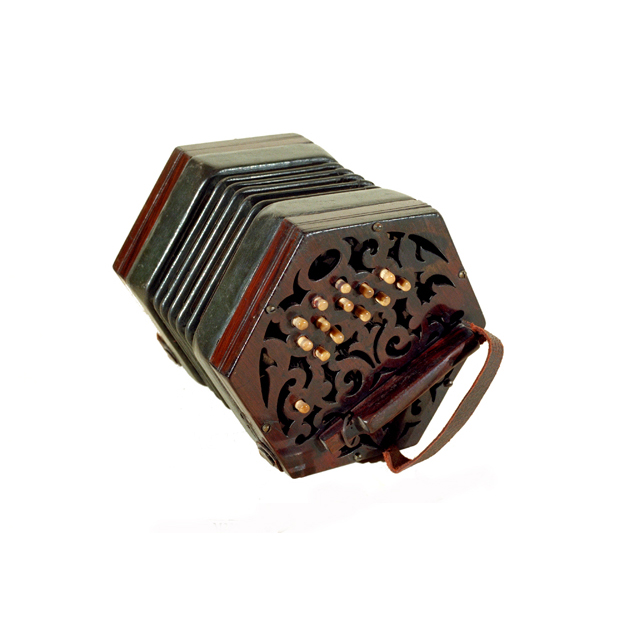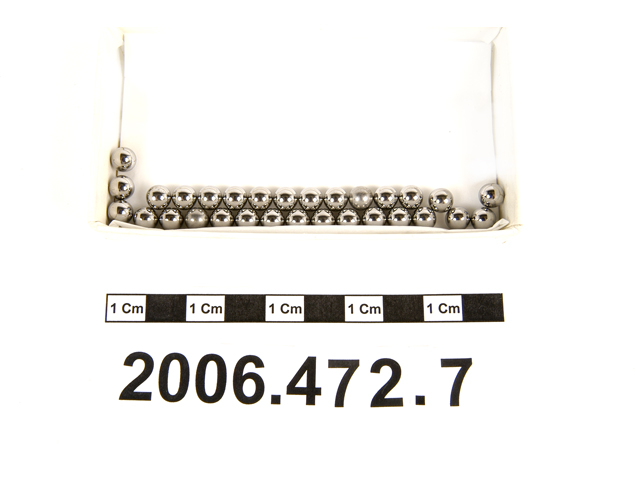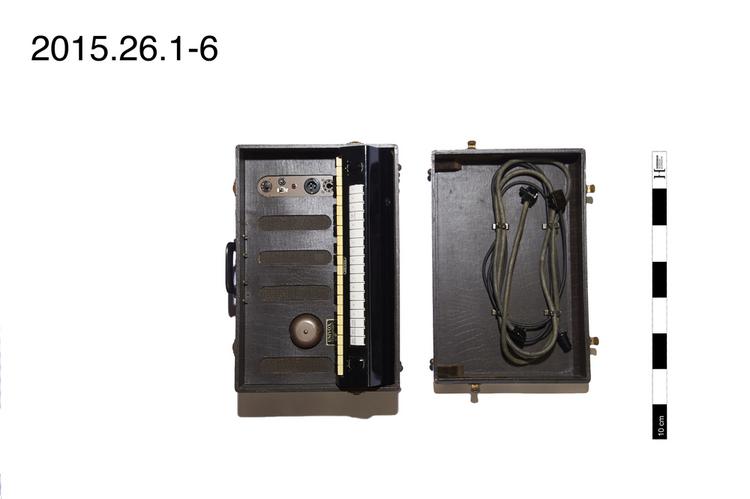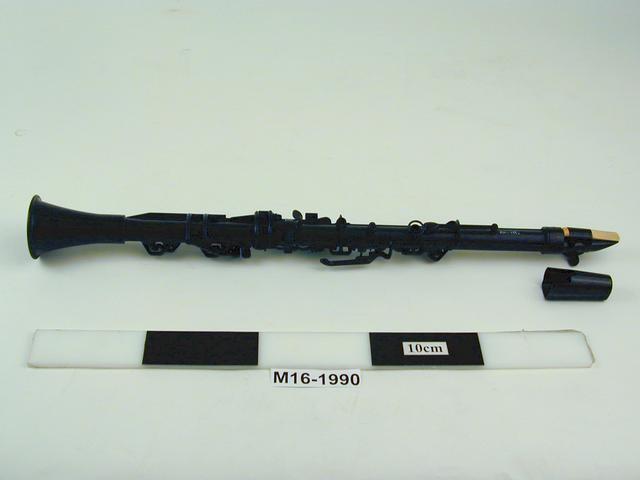
Clarinet in C, plastic body and keys with metal springs. Boehm system. Plastic ligature, cane reed.
Clarinet. Nominal pitch: C. The body, moulded in two halves, keys and ligature are all of ABS plastic. Cane reed. The mouthpiece and bell are separate castings but are not detachable. The keys are mounted along ridges that run down the sides of the instrument and some are hinged at both sides. The keys are moulded with clips that snap into recesses moulded into the ridges. Simple system. Key pads of silicone rubber, metal springs. The instrument has been designed to meet the needs of younger players, with the key touches grouped closely together and the open holes smaller than on a B-flat instrument. The front of the bell has the painted inscription: 'Lyons'; and the barrel area has a logo consisting of an 'L' superimposed on a five line stave within an oval frame.
The clarinet is a difficult instrument for a child to learn because it is expensive, heavy to hold and the keys are spaced far apart for a child's hands. This clarinet, designed by clarinettist and teacher Graham Lyons, is lighter and smaller than a conventional clarinet. The fingerholes are smaller and closer together than those of a standard clarinet. As well as the Lyons clarinet being lighter and cheaper, it is more durable: it has plastic keys which can be repaired by the owner. It is pitched in C, which allows it to be played with the piano without the need to transpose. The Lyons clarinet won the British Design Award in 1993.



